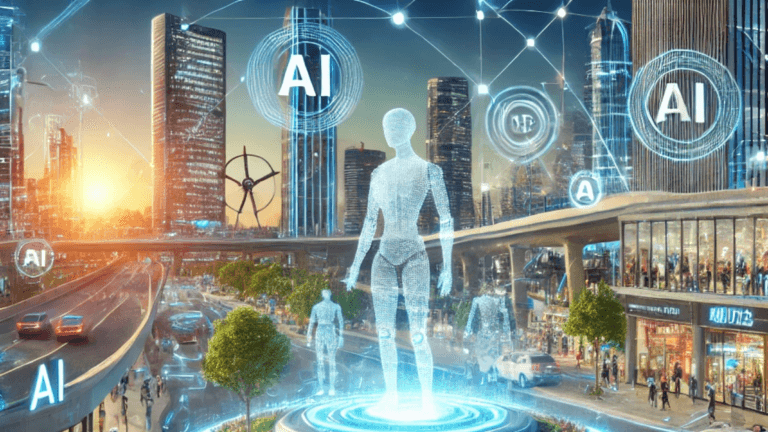Introduction
Brief Overview of Climate Change and Its Urgency
Climate change is one of the most pressing challenges of our time. The Earth’s average temperature has risen by approximately 1.2°C since pre-industrial times, leading to more frequent and severe weather events, such as hurricanes, wildfires, and floods. The melting of polar ice caps and rising sea levels threaten coastal communities worldwide. Immediate and concerted action is essential to mitigate these impacts and prevent further environmental degradation.
The Role of Technology in Combating Climate Change
Technology plays a pivotal role in combating climate change. Innovations in renewable energy, such as solar and wind power, have made clean energy more accessible and cost-effective. Energy storage solutions, like advanced batteries, ensure a stable supply of renewable energy. Additionally, technologies like carbon capture and storage (CCS) help reduce greenhouse gas emissions from industrial processes. Smart agriculture, powered by AI and IoT, optimizes resource use and improves crop yields, contributing to more sustainable farming practices.
Thesis Statement
In 2024, artificial intelligence (AI) is playing a crucial role in combating climate change. AI enhances climate models, optimizes renewable energy systems, promotes sustainable agriculture, and advances carbon capture technologies, making it an indispensable tool in the fight against climate change.
- Instagram Will Soon Let You Reset Your Recomandation Algorithm
- Understanding Web3 Technology: The Next Era of the Internet
- The Hacker’s Roadmap: How to Get Started in IT (2024-25)
- Transforming Learning: How Augmented Reality is Revolutionizing Education
- What is AMP in Technology: A Beginner’s Guide
AI-Powered Predictive Analytics
Forecasting Extreme Weather Events on Combating Climate Change
AI algorithms analyze vast amounts of meteorological data to predict extreme weather events with greater accuracy. By identifying patterns and anomalies, AI can forecast hurricanes, floods, and heatwaves, allowing communities to prepare and respond more effectively.
Predicting Crop Yields and Optimizing Agricultural Practices
AI models predict crop yields by analyzing factors such as soil health, weather conditions, and crop management practices on combating climate change. This helps farmers make informed decisions about planting, irrigation, and harvesting, leading to more efficient and sustainable agricultural practices.
Identifying Vulnerable Areas for Early Warning Systems for Combating Climate Change
AI systems identify regions most vulnerable to climate-related disasters by analyzing geographical, socio-economic, and environmental data. These insights enable the development of early warning systems for combating climate change that can alert authorities and residents, reducing the impact of disasters and saving lives.
AI-Driven Energy Optimization
Smart Grids and Energy Management Systems for Combating Climate Change
AI enhances the efficiency of smart grids by analyzing real-time data on energy consumption, generation capacity, and grid load. This allows for better energy distribution and demand response mechanisms, ensuring a stable and reliable power supply.
Optimizing Energy Consumption in Buildings and Industries on Combating Climate Change
AI-driven systems optimize energy usage in buildings and industries by dynamically adjusting energy consumption based on real-time data. For example, AI can manage HVAC systems in buildings to reduce energy waste while maintaining comfort. In industries, AI can predict equipment failures and optimize operations to minimize energy use on combating climate change.
Developing Renewable Energy Solutions
AI plays a crucial role in the development and optimization of renewable energy solutions. It helps in forecasting energy production from renewable sources like solar and wind, ensuring efficient integration into the grid. AI also aids in the design and management of energy storage systems, making renewable energy more reliable and accessible.
AI in Carbon Capture and Storage
Identifying Promising Carbon Capture Technologies
AI is revolutionizing the identification of new materials for carbon capture. By using machine learning and generative AI, scientists can discover novel materials that enhance the efficiency and cost-effectiveness of carbon capture processes. For instance, AI models can predict the performance of various materials in capturing CO₂, significantly speeding up the research and development phase.
Monitoring and Optimizing Carbon Storage Sites
AI-driven simulations are crucial for monitoring and optimizing carbon storage sites. Advanced neural networks, like the U-FNO architecture, can simulate pressure levels and gas saturation in storage sites with high accuracy2. This helps in selecting optimal injection rates and sites, ensuring safe and efficient carbon storage. Additionally, AI can reduce the time required for modeling carbon storage from months to just a day, making the process more viable and scalable.
Developing AI-Driven Carbon Accounting Tools
AI is also instrumental in developing carbon accounting tools that track and manage carbon emissions. These tools use AI algorithms to analyze data from various sources, providing accurate and real-time insights into carbon footprints. This helps industries and governments to monitor their emissions and implement strategies to reduce their carbon impact.
AI for Biodiversity Conservation
Analyzing Satellite Imagery to Track Deforestation
AI algorithms analyze satellite imagery to detect changes in forest cover, enabling real-time monitoring of deforestation. This helps conservationists identify illegal logging activities and take timely action to protect forests.
Monitoring Wildlife Populations and Habitats
AI-powered tools, such as camera traps and acoustic sensors, monitor wildlife populations and their habitats. These tools use machine learning to identify species and track their movements, providing valuable data for conservation efforts.
Developing AI-Powered Conservation Strategies
AI helps develop effective conservation strategies by analyzing large datasets on biodiversity. For example, AI can predict the impact of environmental changes on different species, helping to prioritize conservation actions and allocate resources efficiently.
AI in Climate Modeling and Research
Improving Climate Models for Accurate Predictions
AI is significantly enhancing the accuracy of climate models. Researchers are using machine learning to develop emulators that replicate the results of traditional climate models without the extensive computational resources. For example, Google’s NeuralGCM combines traditional physics-based models with AI components to produce accurate short- and long-term weather forecasts.
Analyzing Climate Data to Identify Trends and Patterns
AI algorithms analyze vast amounts of climate data to identify trends and patterns that might be missed by conventional methods. This helps scientists understand the underlying factors driving climate change and predict future climate scenarios more accurately.
Developing AI-Based Climate Adaptation Strategies
AI is also crucial in developing strategies to adapt to climate change. By analyzing data on environmental conditions, socio-economic factors, and historical climate impacts, AI can help design effective adaptation measures. These measures can range from optimizing water resource management to planning urban infrastructure that can withstand extreme weather events.
Conclusion
Recap of the Key Roles AI is Playing in Climate Change Mitigation
AI is proving to be a transformative force in the fight against climate change. It enhances predictive analytics, allowing for more accurate forecasting of extreme weather events and optimizing agricultural practices. AI-driven energy optimization is making smart grids more efficient, reducing energy consumption in buildings and industries, and advancing renewable energy solutions. In carbon capture and storage, AI identifies promising technologies, monitors storage sites, and develops carbon accounting tools. Additionally, AI aids in biodiversity conservation by tracking deforestation, monitoring wildlife, and developing conservation strategies. Finally, AI improves climate models, analyzes climate data, and helps devise climate adaptation strategies.
The Potential of AI to Accelerate Climate Action
The potential of AI to accelerate climate action is immense. By providing precise and actionable insights, AI can help policymakers, businesses, and communities make informed decisions that significantly reduce greenhouse gas emissions and enhance resilience to climate impacts. AI’s ability to process and analyze vast datasets quickly and accurately means that it can identify trends and solutions that might otherwise go unnoticed. This accelerates the development and implementation of effective climate strategies, making it possible to achieve climate goals more swiftly and efficiently.
To fully harness the potential of AI in combating climate change, continued research and development are essential. Governments, private sectors, and academic institutions must collaborate to advance AI technologies and integrate them into climate action plans. Investment in AI research can lead to breakthroughs in areas such as renewable energy, carbon capture, and climate modeling. Additionally, fostering an environment that encourages innovation and the ethical use of AI will ensure that these technologies are used effectively and responsibly.
FAQs on Artificial Intelligence: The Game Changer in Combating Climate Change
What is climate change and why is it urgent?
Climate change refers to significant changes in global temperatures and weather patterns over time. The Earth’s average temperature has risen by approximately 1.2°C since pre-industrial times, leading to more frequent and severe weather events, such as hurricanes, wildfires, and floods. The melting of polar ice caps and rising sea levels threaten coastal communities worldwide. Immediate and concerted action is essential to mitigate these impacts and prevent further environmental degradation.
How has the Earth’s temperature changed since pre-industrial times?
The Earth’s average temperature has risen by approximately 1.2°C since pre-industrial times.
What are some of the severe weather events linked to climate change?
Climate change has led to more frequent and severe weather events, such as hurricanes, wildfires, and floods.
Why is immediate action necessary to address climate change?
Immediate and concerted action is essential to mitigate the impacts of climate change and prevent further environmental degradation.
How does technology help combat climate change?
Technology plays a pivotal role in combating climate change through innovations in renewable energy, energy storage solutions, carbon capture and storage (CCS), and smart agriculture.
What are some examples of renewable energy technologies?
Examples of renewable energy technologies include solar and wind power.
What is carbon capture and storage (CCS)?
Carbon capture and storage (CCS) is a technology that helps reduce greenhouse gas emissions from industrial processes.
How does smart agriculture contribute to sustainability?
Smart agriculture, powered by AI and IoT, optimizes resource use and improves crop yields, contributing to more sustainable farming practices.
What role does AI play in combating climate change in 2024?
In 2024, artificial intelligence (AI) enhances climate models, optimizes renewable energy systems, promotes sustainable agriculture, and advances carbon capture technologies, making it an indispensable tool in the fight against climate change.
How does AI help in forecasting extreme weather events?
AI algorithms analyze vast amounts of meteorological data to predict extreme weather events with greater accuracy, allowing communities to prepare and respond more effectively.
How does AI contribute to optimizing agricultural practices?
AI models predict crop yields by analyzing factors such as soil health and weather conditions, helping to optimize agricultural practices.











